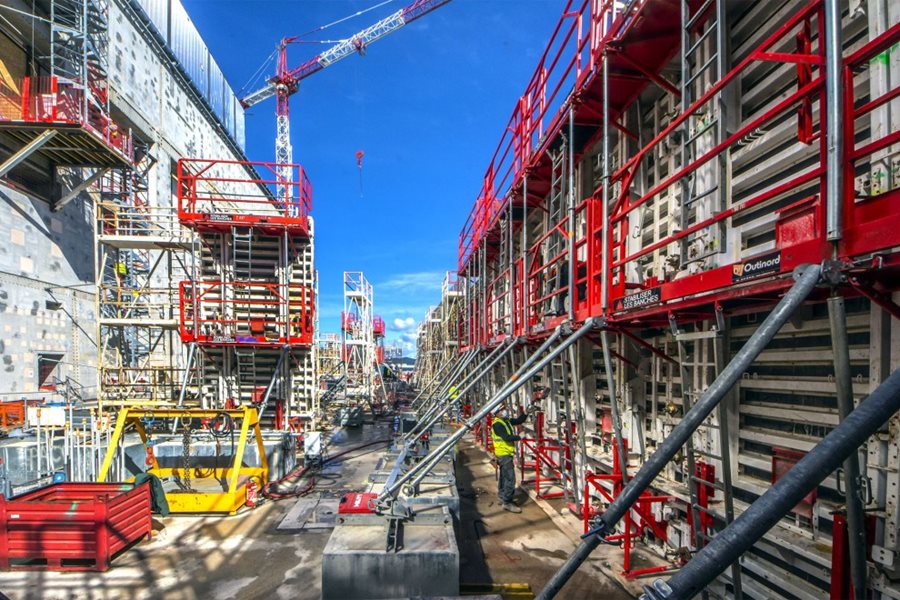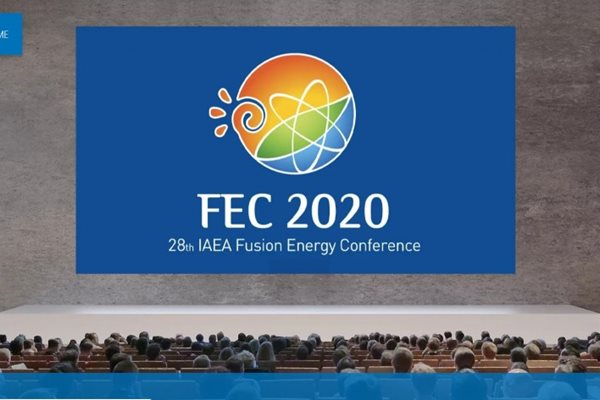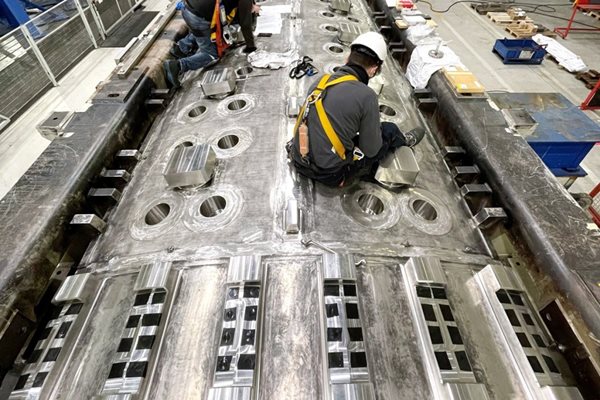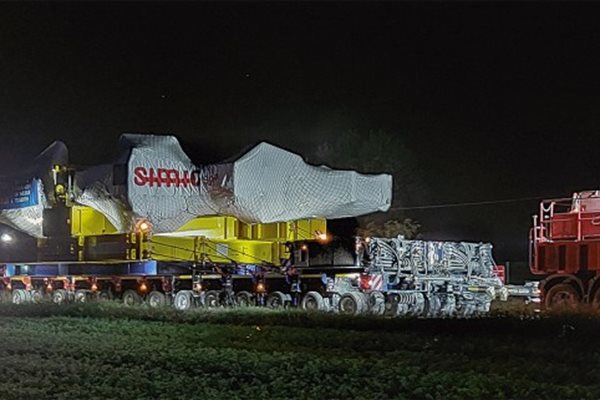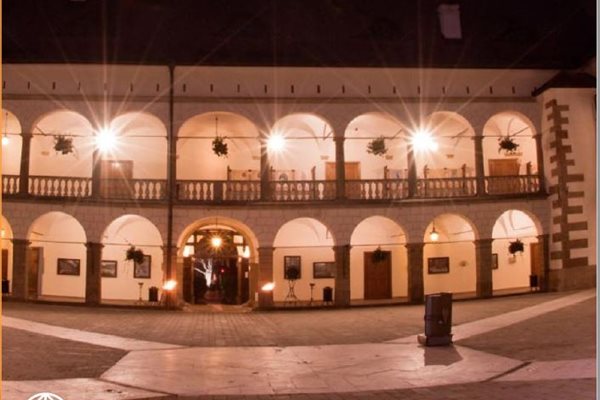
you're currently reading the news digest published from 03 May 2021 to 10 May 2021
featured5
of-interest2
press12
featured
Tritium Building | Work resumes
The energy-producing plasmas in ITER will be fuelled in equal measure by the hydrogen isotopes deuterium and tritium. Deuterium is a stable element that industry has produced routinely since the 1940s; tritium on the other hand is rare, expensive and slightly radioactive and, for all these reasons, must be treated with extreme care and precaution. In the ITER installation, a whole building will accommodate the different systems and equipment that store, handle and recycle this precious element. In late 2018, following ITER Council approval of the updated project schedule and a staged approach to full power operation, major civil works in the Tritium Building were put on hold in order to focus the workforce on the Tokamak and Diagnostics Buildings. While the Tokamak Building was being readied for machine assembly and plant equipment was being installed in the Diagnostics Building, work was frozen at the Tritium Building at level 1 (L1). Activity has now resumed and the four levels that remain to be erected (L2 through L5) should be completed in the spring of 2023. Most of the functions of the Tritium Building are directly linked to the full-power operation of the ITER Tokamak and, as such, will not be needed before 2035. However, the building also accommodates equipment that must be operational for First Plasma, such as the gas injection system that will feed hydrogen to the vacuum vessel, or components that are part of the HVAC, cooling system, vacuum pumping systems. Also, although they will not be needed during the first phases of machine operation, several 'captive' components such as manifold segments for the neutral beam injection or disruption mitigation systems must be installed before construction progresses. The civil work challenges for the Tritium Building are similar to those of the Tokamak Building, with areas where steel reinforcement will be exceptionally dense. The difference is in the interior design: the Tritium Building is a house of many rooms (300 in total), which means there will be many inside walls to build and close to 5,000 cubic metres of concrete to pour.
FEC 2020 | E-conference opens, participation never higher
The 28th IAEA Fusion Energy Conference (FEC) is off to an auspicious start. Open to the public for the first time thanks to the technical possibilities of an all-virtual format, the conference has attracted 3,400 attendees, including both full participants and observers. Determined to view the all-virtual format as an opportunity instead of a constraint, the organizers of the conference—the International Atomic Energy Agency (IAEA), the French Alternative Energies and Atomic Energy Commission (CEA), and the ITER Organization—have organized an innovative week-long program that takes full advantage of a powerful web platform. Participants can type questions live during the scientific sessions, and receive answers during the question and answer sessions that follow. A live chat function permits viewers to correspond in real time with authors of e-posters. And recordings of all sessions become accessible on the platform as early as the next day—a welcome feature since there are too many events planned for one participant to attend them all. In addition to a weeklong program of scientific talks, many side events have been organized including: A 30-minute virtual visit to the ITER worksite, Technical tours of operating fusion devices, Webinars, A virtual exhibit hall, Daily poster sessions, And three IAEA-sponsored events: 'Women in Fusion,' 'Celebrating 60 years of Fusion Energy Conferences,' and IAEA Learning Resources in Fusion: Educating the Next Generation of Fusion Experts.' In his opening remarks on Monday 10 May, IAEA Director General Rafael Mariano Grossi reminded the audience of 1,000 participants and 2,400 observers that the biennial conference has always been the pre-eminent international gathering of fusion experts. 'The first Fusion Energy Conference was held in 1961. Since then, it has helped the field of nuclear fusion, becoming the main platform for discussing key physics and technology issues as well as innovative concepts directly relevant to the use of nuclear fusion as a future energy source,' he stressed. 'Over the last years, we have seen fusion advancing quicker than ever before, opening new job opportunities and inspiring career horizons.' Bernard Bigot, ITER Director-General, regretted that plans to host the 2020 conference in Nice, France, were derailed by the global pandemic. 'But the pandemic has only delayed us in small ways. It has not stopped us in any way from pursuing our vision for fusion energy — as a future source of clean, safe, and virtually unlimited baseload power generation for all of humankind. In the same way, we can see that FEC 2020 has been delayed, but not prevented.' François Jacq, Chairman of the French Alternative Energies and Atomic Energy Commission (CEA) and High Representative in France for the ITER Project, emphasized the strong links between CEA and fusion and France's continued strong commitment to the ITER Project. Calling the Fusion Energy Conference a 'major biennial milestone,' he characterized it as a venue where 'top international players in the field of fusion energy will have the floor to present and discuss the state-of-the-art research and innovation in all fusion-related applications.' A full report will be published in the next ITER Newsline.
Vacuum vessel in Europe | Fitting the pieces virtually
A 'virtual fit' tool developed by the European Domestic Agency is helping the vacuum vessel manufacturing team anticipate the challenge of final assembly—the moment when four sub-segments are brought together and welded to form the final 440-tonne sector. By visualizing alignment challenges and eventual clashes or gaps, the team is saving time and reducing risk. Each D- shaped ITER vacuum vessel sector is an assembly of four smaller manufactured pieces—the inboard, upper, equatorial and lower poloidal segments. In the final production stage, the completed segments, which weigh approximately 100 tonnes each, must be brought together on an assembly platform to be aligned within exacting tolerances and welded. With only millimetres to spare and huge components to be adjusted by crane, the operation is a challenging one. For vacuum vessel sector #5—the first in the European series—Fusion for Energy has introduced a virtual tool that takes metrology data from the completed segments and fits them together virtually, in advance of the actual operation. The tool is capable of generating a simulation based on more than 1 million surveyed points, and highlighting various interface zones. By simulating different alignment scenarios, the contractors are able to arrive at the best and most optimized fit solution. 'It helps project managers to minimize risks and have a precise control of the assembly,' explains Fusion for Energy metrology expert Alessandro Lo Bue, who worked with colleague Edoardo Pompa (SETIS Groupe Degaud) to build the methodology for virtual fitting from specialized software (SpatialAnalyzer®). The tool has been in use for vacuum vessel sector #5 since November 2020. See a report on the Fusion for Energy website here.
Gas injection system | Last manifolds completed in China
Contractors to the Chinese Domestic Agency have completed an important part of the gas injection system—the distribution manifolds that carry gas species from the tritium plant to the ITER machine and back for processing. Think of them as service pipes, with important added characteristics to meet ITER's strict regulations for protection-important components*. Inside of a large guard pipe, six process lines for gas going toward the plasma surround a central evacuation pipe that transports exhaust gases back to the tritium plant. In the interspace is an inert gas (nitrogen) flowing toward tritium plant, where any leaks from the process pipes can be detected. The 200-metre-long manifold distribution system provides different gas species—including helium, deuterium, tritium, nitrogen, argon and neon—to the pellet injection, gas fuelling, neutral beam and disruption mitigation systems of the ITER machine. Design and manufacturing activities have been underway in China since the 2012 signature of the Gas Injection Procurement Arrangement. The last batch of components will ship soon from Huizhou, Guangdong Province. A ceremony organized on 10 April 2021 by manufacturer CNI23 (China Nuclear Industry Construction 23 Co., Ltd.), was attended by representatives of ITER China, the Institute of Plasma Physics (Chinese Academy of Sciences), and the Southwestern Institute of Physics. The head of the Engineering Domain at ITER, Alain Bécoulet, sent a video message. See the news on the ITER China website in English and Chinese. *As a nuclear facility, ITER has categorized the components that keep the facility in a safe state and prevent or mitigate nuclear risks to humans and the environment as Protection-Important Components (PIC).
Magnets | Seventh vertical coil reaches ITER
Seven toroidal field coils have reached ITER in the past year. The latest, TF3 from Europe, passed through the ITER gates on Friday 3 May. The European and Japanese Domestic Agencies are sharing the responsibility for the procurement of 19 toroidal field coils (18 for the machine, plus one spare). Since the first coil arrived on site in April 2020, a total of seven have been received, and another five are expected before the end of the year. Toroidal field coils will be associated by pair with each vacuum vessel sector. Coils TF12 and TF13, from Japan, will be the first to be mounted on specialized tooling in the Assembly Hall. TF3, the most recent arrival, will join others in storage, where assembly contractors will use the opportunity to advance mechanical preparatory activities such as welding cooling pipes, attaching clamps, and welding interfaces prior to assembly.
of-interest
Students of fusion: design a book cover for the IAEA
The International Atomic Energy Agency, supported by the European Fusion Education Network FuseNet, is about to release a new textbook on fusion technology. The publication is a follow-up to the IAEA textbook on fusion physics, which is consultable here. All Bachelor, Masters and Doctoral students of fusion are invited to submit a cover design proposal, in a Book Cover Contest that ends on Wednesday 30 June 2021. See all information and instructions on the FuseNet website.
PhDiaFusion 2021 announced
Organized every two years by CEA Cadarache (France) and the Institute of Nuclear Physics PAN (Poland), the PhDiaFusion Summer School of Plasma Diagnostics is designed for graduate students and their tutors in the spirit of a "master and apprentice" approach. The next edition will be held from 20 to 24 September 2021 on the topic of "Neutron diagnostics development for ITER, DEMO and IFMIF-DONES." For all information visit this page.
